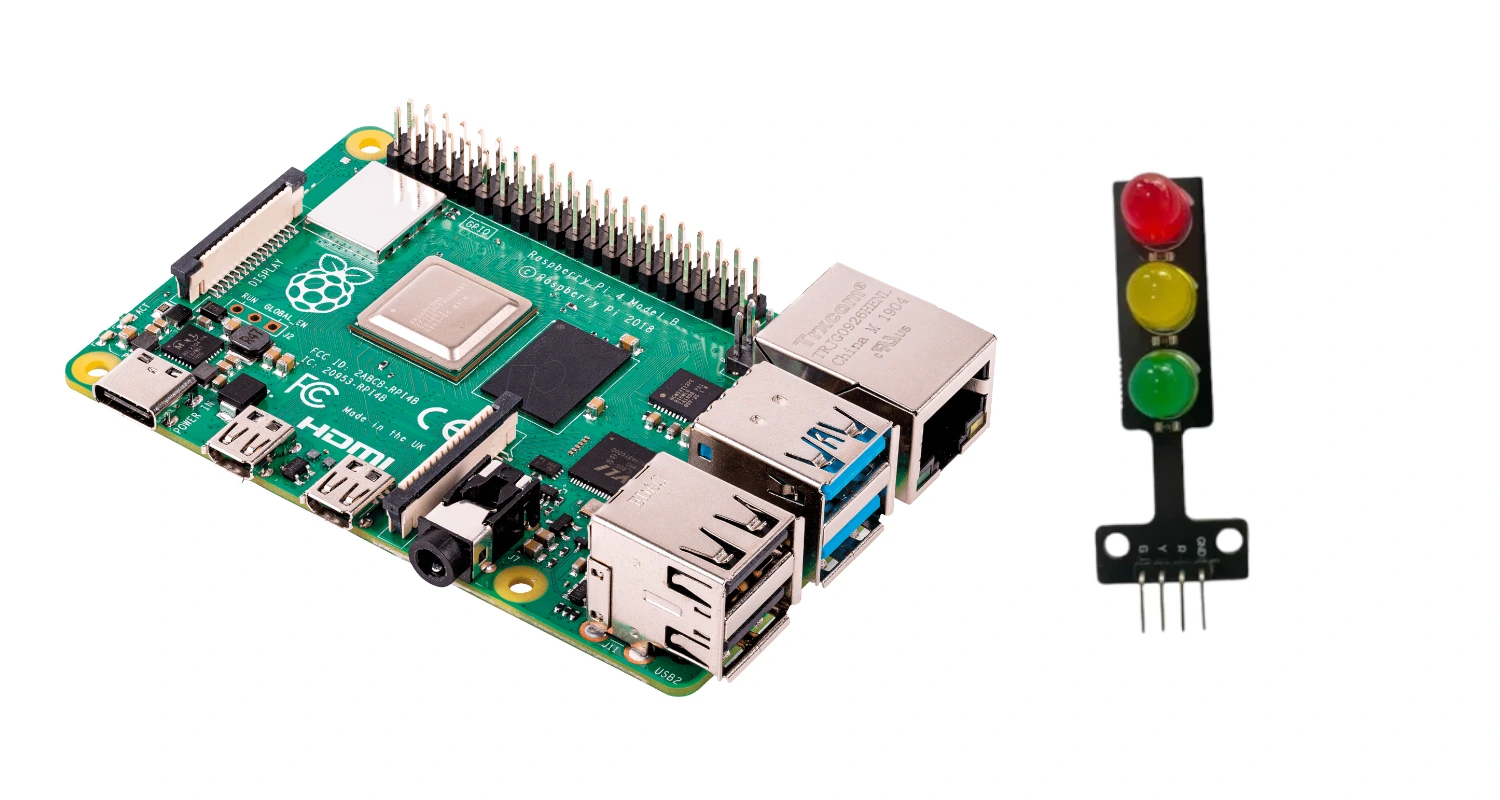Some links in this post may be affiliate links. We may get paid if you buy something or take an action after clicking one of these, but without addictional costs for you compared to direct buying.
Last Updated on 19th July 2025 by peppe8o
In this tutorial I will show you how to connect and use a Traffic Light Module with Raspberry PI, showing the required wiring and an example with Python.
For my tests, I will use a Raspberry PI 5 Model B computer board, but this should work with any Raspberry PI computer board.
About the Traffic Light Module
The traffic light module combines 3 LEDs, having the same colors and order of real traffic lights:
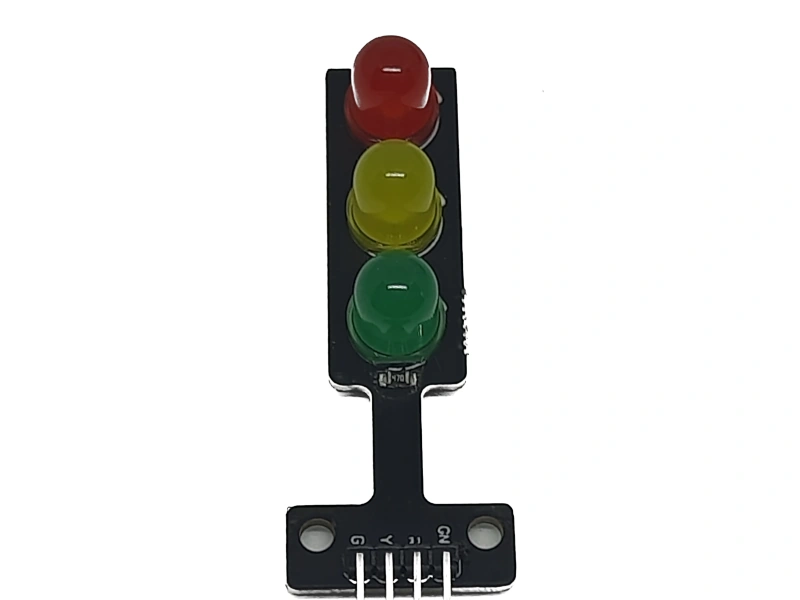
It simplifies LEDs management because it adds by default the required resistors attached to every LED, so you don’t have to worry about protecting the LEDs from burning. You can see these resistors below each LED, as shown in the following picture:
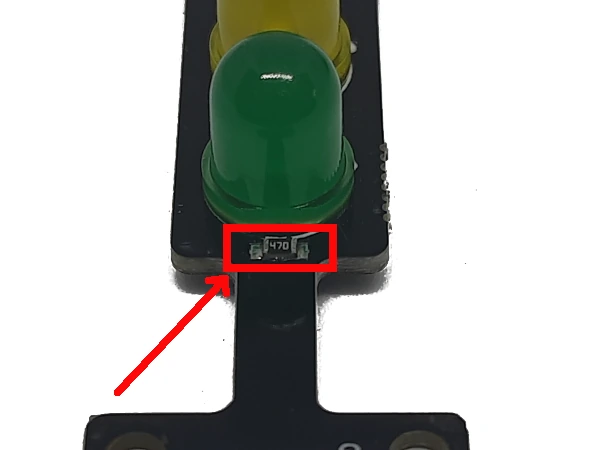
The module can be interfaced with 4 simple PINs, each one having an intuitive naming:
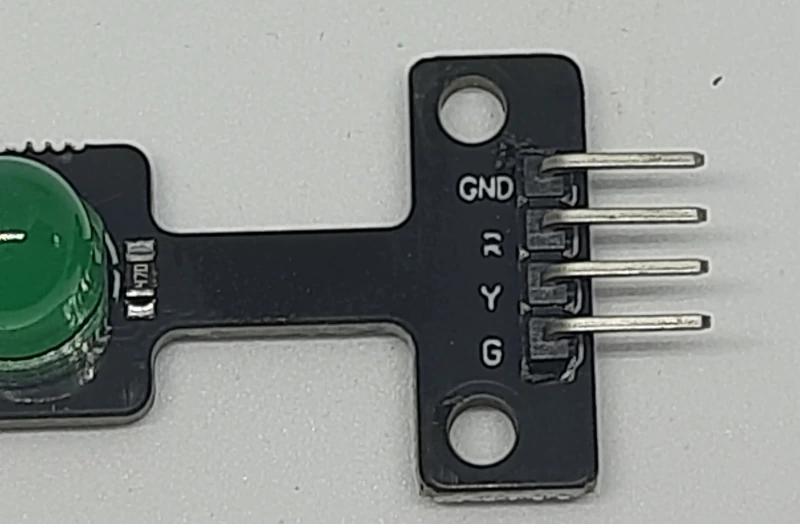
The PINs function is described below:
- GND: connects to the Ground
- R: controls the red LED
- Y: controls the yellow LED
- G: controls the green LED
Once you have connected the GND PIN with any ground reference of your board, you can pull up one or more of the other PINs to switch on the related LED(s).
What We Need
As usual, I suggest adding from now to your favourite e-commerce shopping cart all the needed hardware, so that at the end you will be able to evaluate overall costs and decide if to continue with the project or remove them from the shopping cart. So, hardware will be only:
- Raspberry PI Computer Board (including proper power supply or using a smartphone micro USB charger with at least 3A)
- high speed micro SD card (at least 16 GB, at least class 10)
- Traffic Light Module
- Dupont wirings
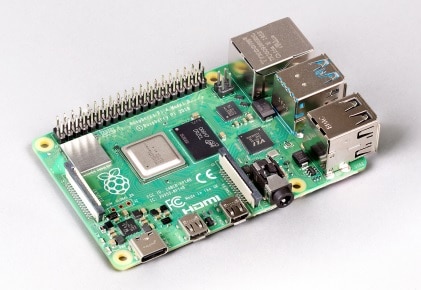
Step-by-Step Procedure
Traffic Light Module and Raspberry PI Wiring Diagram
Please arrange the wiring as shown in the following picture, according to the Raspberry PI pinout (all the most recent Raspberry PI computer boards have the same pinout of Raspberry PI Zero):

Please find below some pictures from my home lab:
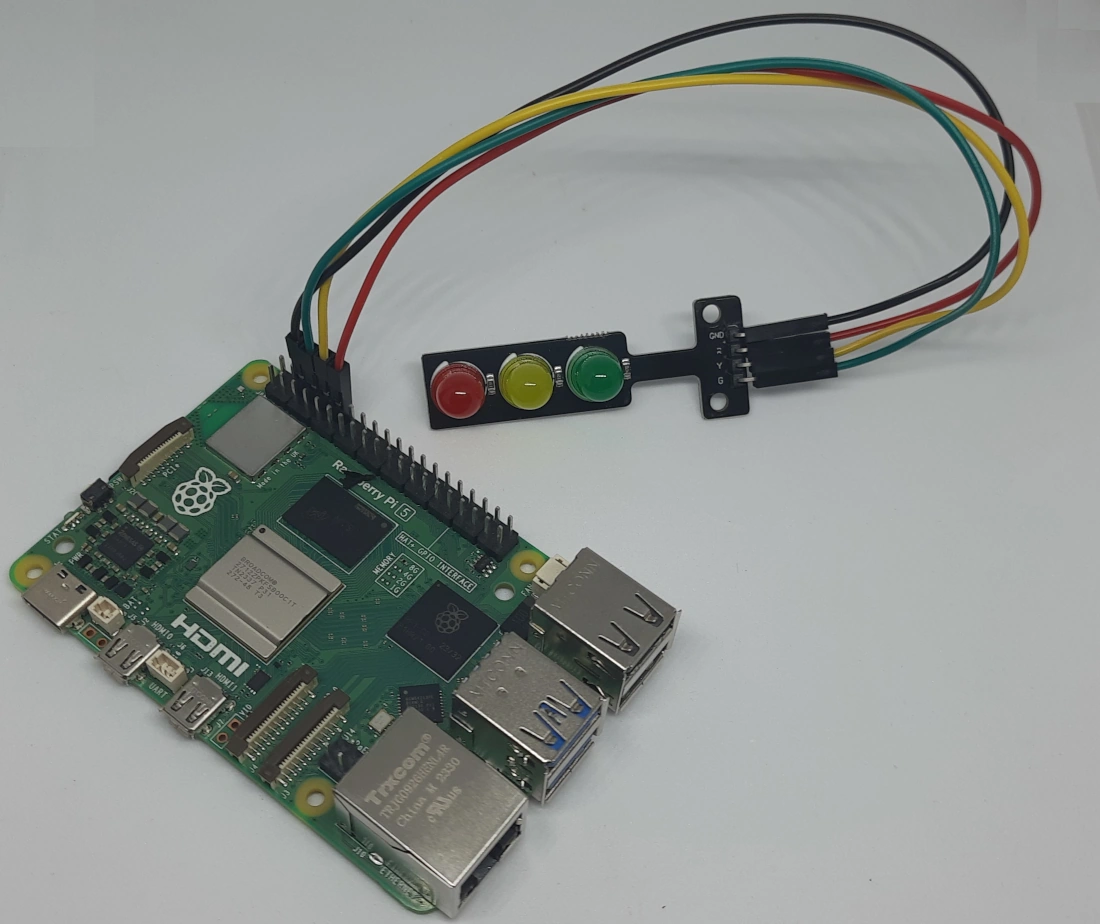
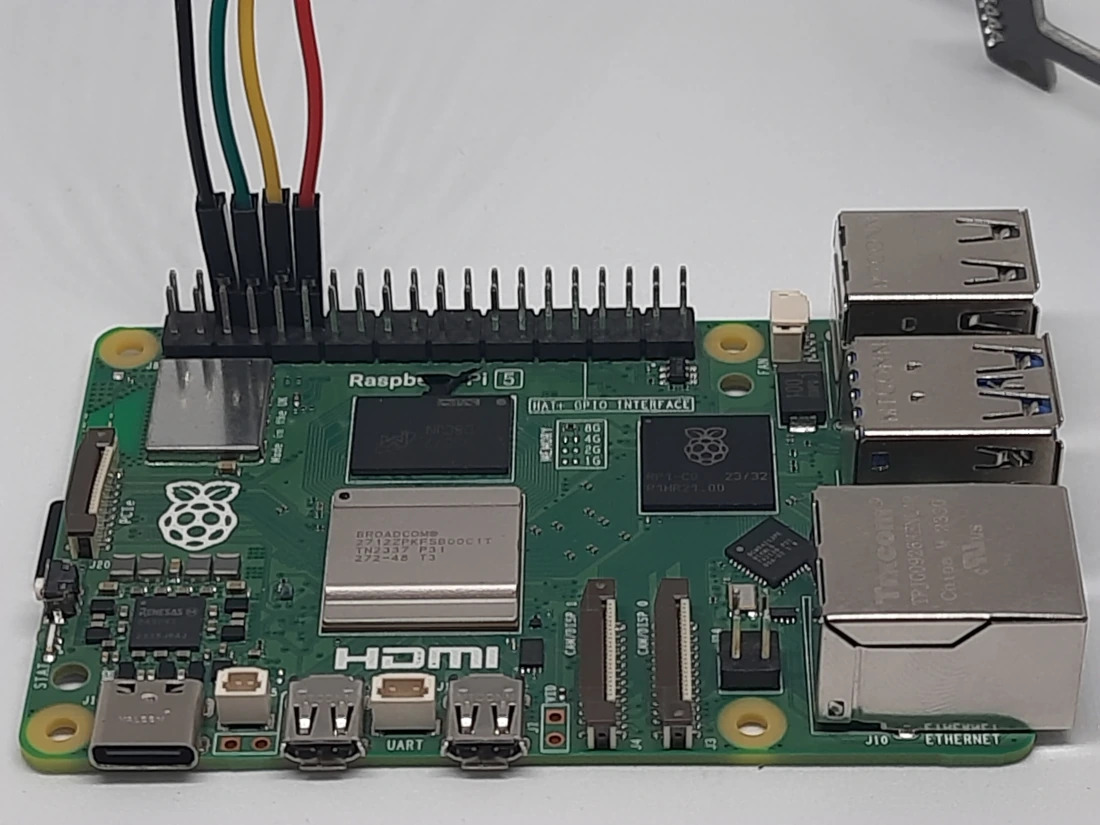
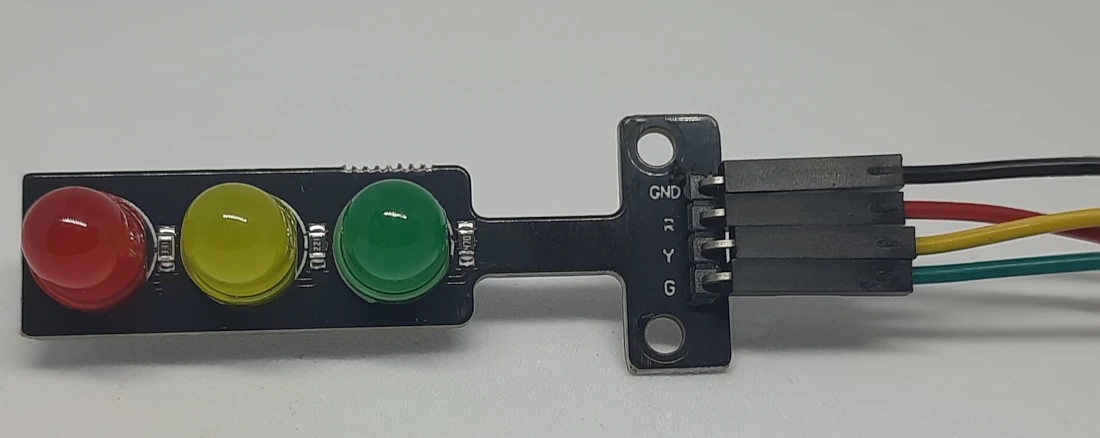
Prepare the Raspberry PI Operating System
The first step is installing the Raspberry PI OS Lite (I suggest the 64-bit version, for boards supporting it) to get a fast and light operating system (headless). If you need a desktop environment, you can also use the Raspberry PI OS Desktop, in this case working from its terminal app. Please find the differences between the 2 OS versions in my Raspberry PI OS Lite vs Desktop article.
Please make sure that your OS is up to date. From your terminal, use the following command::
sudo apt update -y && sudo apt full-upgrade -yGet the p8o Library
I’ve created a library that will help you keep your Python code simpler to read and use. You can get the p8o-pi library in your Raspberry PI from my GitHub repository with the following command:
wget https://raw.githubusercontent.com/peppe8o/p8o_pi/main/p8o_pi.pyThis will download a “p8o_pi.py” file, that must stay in the same folder of the file with the test example (that we’ll see below) or in the default Python path.
Now, please download a simple test. You can get it from my download area in your Raspberry PI with the following command:
wget https://peppe8o.com/download/python/trafficlight/traffic_light_test.pyThe following paragraphs will explain this test script.
In the beginning, we import the required modules. The sleep function from the time module allows us to add a specific delay (in seconds) with the traffic light module fixed in a state (red or green).
from time import sleep
from p8o_pi import traffic_lightThen, we must set the LED variables where we tell the script the used GPIOs. If you used my same connection schema, you can leave them unchanged, if you used different GPIOs, please update the numbers here:
green_LED = 14
yellow_LED = 15
red_LED = 18Now, we initialize the traffic_light object with the following line:
tl = traffic_light(red_LED, yellow_LED, green_LED)This object has 3 main methods:
- go(): this will activate the green LED, switching off all the other LEDs
- stop(): this method will make the yellow LED blink with the green LED fixed on. After 3 seconds, the red will activate and the other 2 LEDs will be switched off. You can also change the duration of the yellow blinking stage by specifying the number of seconds (for example, “stop(10)” will make it blink for 10 seconds)
- off(): switches off all the 3 LEDs
The main program runs a loop where the green light activates for 3 seconds, then the yellow blinks (with the green LED fixed) for 3 seconds, and finally the red LED activates for 3 seconds:
try:
while True:
tl.go()
sleep(3)
tl.stop()
sleep(3)The final except statement will allow you to stop the loop by pressing the CTRL+C combination from your keyboard, switching off all the LEDs:
except KeyboardInterrupt:
# Turn off all LEDs and exit safely on keyboard interrupt
tl.off()Test the Traffic Light Module Raspberry PI
You can run this test with the following command:
python3 traffic_light_test.pyWhat’s Next
Interested in more cool projects for your Raspberry PI? Take a look at peppe8o Raspberry PI tutorials.
Enjoy!

Open source and Raspberry PI lover, writes tutorials for beginners since 2019. He's an ICT expert, with a strong experience in supporting medium to big companies and public administrations to manage their ICT infrastructures. He's supporting the Italian public administration in digital transformation projects.

